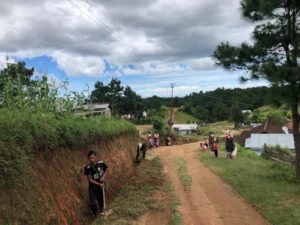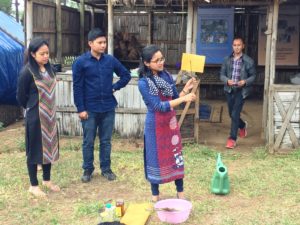Introduction
Agricultural expansion continues to be a major driver of large-scale conversion of tropical forests into human-use areas [1]. The resultant habitat loss is generally detrimental to biodiversity, leading to the loss of species, as well as community structure and function [2]. Efforts to prevent forest conversion and protect biodiversity in the tropics––including threatened wildlife species in particular––have largely best been met by the establishment of Protected Areas (PAs) [3]. However, under current rates of human population growth, associated land-use change and inefficient policy, the scope for expansion of PAs is greatly limited [4], with continuing conversion of forests into agricultural land. There is also increased recognition that PAs are not insular, and biodiversity within PAs interacts with agricultural land-uses outside [5]. As such, conservationists have brought to attention the need to evaluate and target the ever-increasing agricultural land-use types for their potential to supplement biodiversity conservation in the tropics.
Agricultural land-uses surrounding PAs, collectively termed the matrix (non-optimal habitat areas in conservation landscapes), are characterized by a mosaic of managed land-use types interspersed with natural and semi-natural habitats that vary in their ability to support biodiversity [6,7]. This conservation potential of the matrix is highly contextual, depending on the land-use type, taxon, spatial location and other factors. For example, biodiversity is better supported in agro-forests than intensive agriculture, while birds as a taxon have been found to be highly sensitive to forest conversion into agriculture based on multiple measures of biodiversity [2]. With approximately half of the closed-canopy forests in the tropics converted predominantly into agriculture [8], there is an ever-present need to understand the interaction of biodiversity with the matrix and its characteristics in important conservation landscapes [5,6].
The compositional elements of a matrix (e.g., habitat type, vegetation structure), and the spatial configuration of these elements (e.g., proximity to optimal/protected habitat) play an important role in structuring and determining the composition of biotic communities [6]. Previous research involving different taxonomic groups ranging from plants to mammals, reveal differential responses of various taxa to changes in composition and configuration of matrix elements [7,9]. For birds, the taxon of interest in this study, vegetation structure, in terms of its composition, plays a significant role in influencing community properties [10,11]. Vegetation structure mediates foraging substrates and resources for birds [12], and can also influence risk perception through providing cover [13]. Hence, the presence and abundance of different species is likely to be determined to a large degree by the kind of vegetation structure present. At the landscape scale, vegetation structure will invariably differ across the matrix, which in turn can significantly alter bird communities. In addition, spatial configuration of different matrix elements also impacts the way bird communities use the matrix. An important example is the proximity of matrix elements to optimal habitat: in many bird communities, increasing distance from contiguous forest habitat can greatly alter the structure and composition of the community [10].
A comprehensive approach to understanding the link between biotic communities and the matrix require the use of both taxonomic metrics as well as trait-based metrics to measure community response. Taxonomic metrics such as species richness and composition are highly useful in highlighting community changes relevant to conservation of important taxa. However, they fail to take into account species traits such as behavior, diet or ecosystem function/role that allow generalizations among compositionally different communities [14]. Trait-based metrics such as guild occupancy, on the other hand, address shared characters between species that allow for a mechanistic understanding of how environmental change might affect community structure disregarding compositional differences between communities [15,16]. However, these, in turn, fall short in their ability to highlight taxonomic changes that may be of conservation concern. Thus, the use of both types of metrics is highly important for studies relevant to biodiversity conservation and management to provide a localized as well as a general understanding of community response to land-use change.
In this study, we first use a guild-based framework to investigate how vegetation structure and proximity to a PA influence the wintering bird community that uses wooded land-use types surrounding a contiguous tropical forest in Meghalaya, Northeast India. We use an occupancy modeling approach to assess vegetation and proximity effects on guilds as it allows the separation of ecological and sampling processes [17]. In doing so, we also compare the site-use of individual guilds inside the PA to that in the surrounding matrix, as an evaluation of the ability of the wooded matrix to maintain community functionality. Second, we compare estimated species richness, and naïve site-use of detected species, between the PA and the surrounding wooded matrix to assess changes in taxonomic composition. We define wooded land-use types here as any land-cover type comprising of closed-canopy or open-canopy forests situated in the landscape, including, but not restricted to, natural forests, agroforests and mixed plantations. We conclude with a discussion on the possible mechanisms linking different guilds to vegetation structure and proximity to a PA, the processes that might explain site-use across the landscape by guilds, the relevance of taxonomic changes and the conservation implications of our study.





